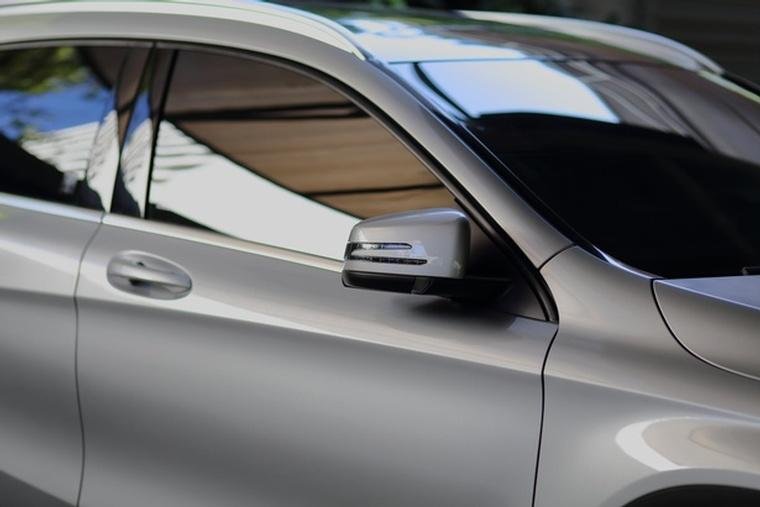Car window tinting is more than just an aesthetic upgrade; it offers numerous benefits that enhance both the comfort and safety of your vehicle. Whether you’re a new car owner considering tinting for the first time or a seasoned driver looking to re-tint your vehicle, understanding the ins and outs of car window tinting can help you make an informed decision. This comprehensive guide will delve into the various types of tint, the benefits of window tinting, legal considerations, the application process, and maintenance tips.
Understanding Car Window Tinting
Car window tinting involves applying a thin film to the windows of your vehicle to reduce sunlight and heat. This film can vary in thickness, color, and composition, allowing for a range of visual styles and levels of protection. The main types of window tint films include:
- Dyed Window Film: This is the most common type of tint. It uses dyed polyester to absorb heat and reduce glare. While it provides privacy and a darker appearance, it does not offer much in terms of heat rejection or UV protection.
- Metalized Window Film: This film incorporates tiny metallic particles, reflecting heat away from the vehicle. It offers better durability and scratch resistance than dyed film but can interfere with radio signals.
- Ceramic Window Film: Made from non-metallic and non-dyed materials, ceramic film provides excellent heat rejection and UV protection without interfering with signals. It is often more expensive but is known for its high performance and durability.
- Hybrid Window Film: Combining dyed and metalized films, hybrid tints offer a balance between heat rejection, aesthetics, and price.
Benefits of Car Window Tinting
Heat Reduction and Comfort
One of the primary reasons for tinting car windows is to reduce heat inside the vehicle. Tinted windows can block up to 99% of harmful UV rays and a significant amount of infrared heat, creating a cooler environment. This is especially beneficial during hot summer months when the temperature inside a car can rise significantly.
UV Protection
Prolonged exposure to UV rays can lead to skin damage and even skin cancer. Tinted windows provide a protective barrier against these harmful rays, helping to keep you and your passengers safe while on the road.
Enhanced Privacy
Tinted windows offer an additional layer of privacy. Whether you’re parked in a crowded area or driving through busy streets, window tinting can help protect your belongings from prying eyes and enhance the security of your vehicle.
Improved Aesthetics
Automotive window tinting can enhance the overall appearance of your vehicle. A well-done tint job adds a sleek, sophisticated look, increasing the car’s value and appeal. Different shades and styles allow for customization that reflects your style.
Glare Reduction
Driving can be challenging when sunlight or headlights from other vehicles create glare. Tinted windows help minimize glare, making it easier and safer to drive, particularly during sunrise and sunset.
Increased Safety
In the event of an accident, tinted window film can hold shattered glass in place, preventing it from scattering and causing injury. Additionally, the added privacy can deter potential thieves from targeting your vehicle.
Legal Considerations
Before applying window tint, it’s crucial to familiarize yourself with your local laws and regulations regarding window tinting. Laws vary by state or country, and there are specific guidelines regarding the allowed tint percentages for different windows. Here are some general points to consider:
- Front Windshield: Most places allow a tint strip at the top but prohibit tinting the entire windshield.
- Front Side Windows: Many jurisdictions require a certain level of light transmission (often around 70%), meaning that the tint cannot be too dark.
- Back Side Windows and Rear Window: These often have more lenient regulations, but it’s essential to check your local laws.
Failing to comply with these regulations can result in fines and the requirement to remove the tint, so be sure to do your research beforehand.
The Tinting Process
Choosing the Right Film
Before starting the application process, select the type of tint film that best meets your needs. Consider factors such as UV protection, heat rejection, appearance, and your budget.
Preparing Your Vehicle
To ensure the best results, your vehicle should be clean and free of any debris. A professional tinting service will typically wash and prep the windows before application.
Application of Tint Film
The installation process involves measuring and cutting the tint film to fit your vehicle’s windows. The film is then carefully applied using a heat source to ensure proper adhesion and contouring to the window’s shape.
Drying and Curing
Once the film is applied, it will need time to dry and cure. This process can take anywhere from a few days to a week, depending on the type of film and environmental conditions. During this time, it’s crucial to avoid rolling down the windows to ensure a proper bond.
Final Inspection
After the film has cured, a professional will inspect the installation to ensure there are no bubbles, creases, or imperfections.
Maintenance of Tinted Windows
To maximize the lifespan and effectiveness of your tinted windows, proper maintenance is essential. Here are some tips:
- Wait Before Cleaning: Avoid cleaning the tinted windows for at least a week after installation to allow the film to set properly.
- Use the Right Cleaning Products: When cleaning tinted windows, use a gentle, ammonia-free cleaner. Harsh chemicals can damage the tint and lead to peeling.
- Soft Cloths Only: Always use soft, lint-free cloths to prevent scratching the film.
- Regular Inspections: Periodically check the tint for any signs of bubbling, peeling, or discoloration. Early detection can help address issues before they worsen.
Conclusion
Car window tinting is an investment that offers a blend of comfort, safety, and style. With various types of films available, it’s essential to choose one that suits your needs while complying with local laws. The benefits of tinted windows, from heat reduction to enhanced privacy and UV protection, make it a worthwhile consideration for any car owner. By understanding the tinting process and maintaining your windows properly, you can enjoy the full range of advantages that window tinting offers for years to come. Whether you choose a professional installation or consider a DIY approach, make sure to weigh the pros and cons carefully to achieve the best results for your vehicle.






More Stories
Elevate Your Bathroom with Brass Bathroom Accessories
A Comprehensive Guide to Gate Installation
Choosing Quality Aluminum Windows for Homes